
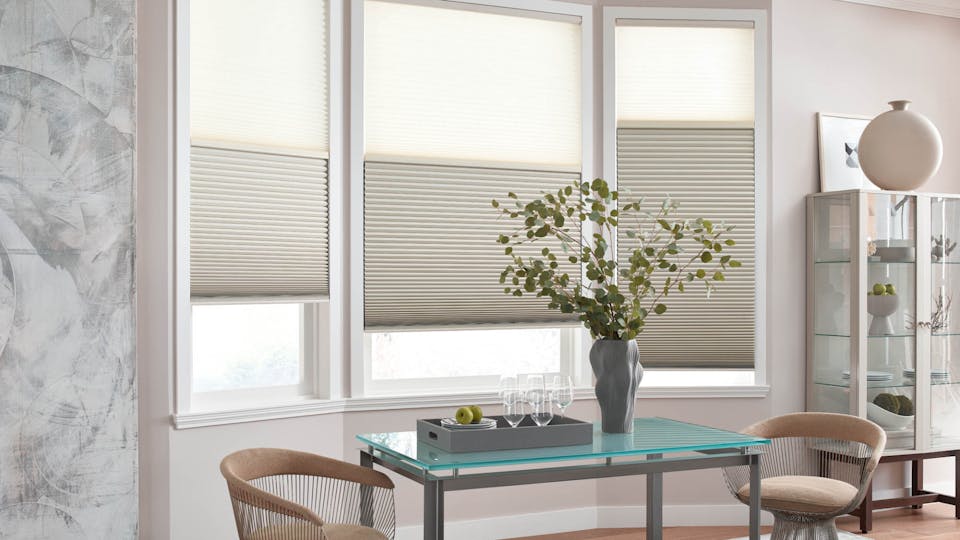
Pictured: Premium Light Filtering Cellular Shade in Sugary Sand.
Single and Double Cellular Shades Make Welcome Additions to Any Home
Honeycomb cellular shades give you all the terrific benefits of traditional window blinds and shades. They provide privacy and let you control the amount of natural light coming in. But they also have other advantages—the most appealing being their energy-efficient insulating properties.
Tired of throwing money out the window on heating and cooling bills? Single cell or double cell shades are an ideal solution. And they come in a range of colors, light filtering and room darkening fabrics, and advanced lift options—so your customization possibilities are endless! Let's explore the advantages of cellular shades and how to decide between single cell vs. double cell shades.
What's the Difference Between Single Cell and Double Cell Shades?
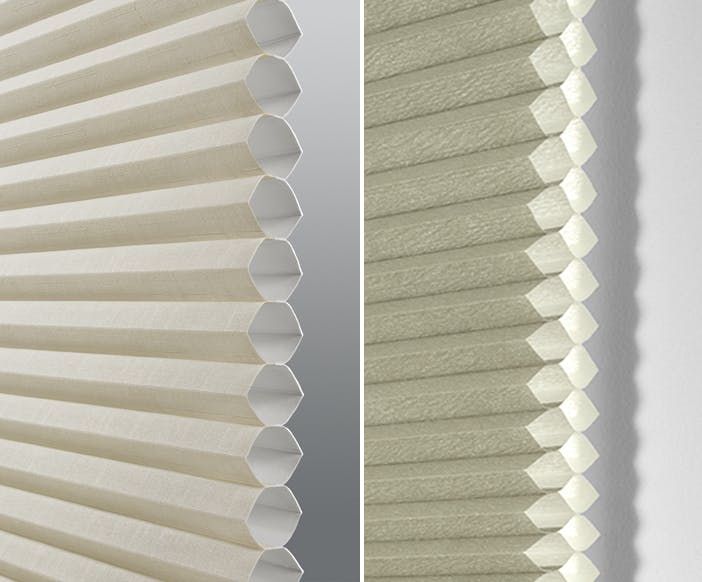
Imagine the inside of a beehive with its honeycomb construction. That's how cellular shades are designed. Single cell shades feature one row of hexagonal cells stacked on top of one another. Double cell shades have two rows of cells that fit into one another to provide an added layer of protection and insulation.
If you're looking for window coverings that give you the privacy, versatility, and insulation you need, cellular shades get the job done. So, which is better—single or double cell shades?
Single Cell Shades
Single cellular shades generally cost less than double cell shades. There's less material involved, which means shorter manufacturing times.

You'll also enjoy savings in the long run. Single cellular shades provide better insulation than standard shades. The pleated honeycomb material filters light and blocks UV rays, so your home stays warmer in the winter and cooler in the summer. That, in turn, reduces your energy costs.
Blinds.com offers a wide selection of single cell shades available in light filtering and blackout materials.
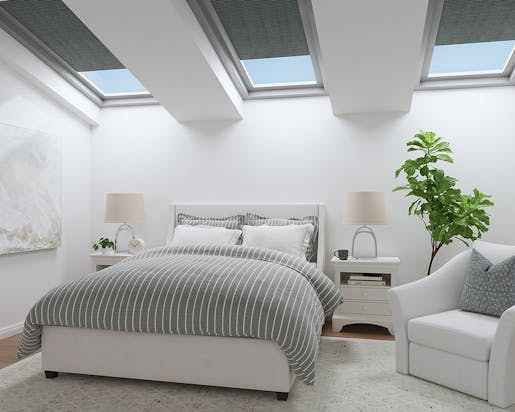
Pictured: Blinds.com Light Filtering Cellular Skylight Shades.
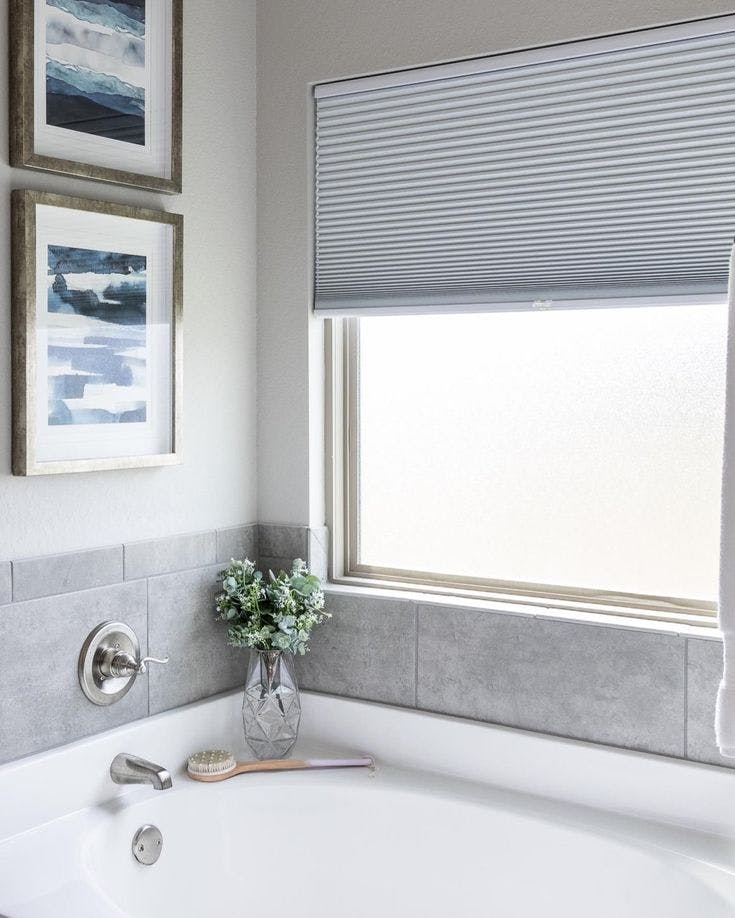
Pictured: SimplyEco Cordless Blackout Cellular Shades in White. Photo via: @keshia_j_home.
Double Cell Shades
Double cell material is your best bet when comparing single vs. double cellular shades for energy efficiency. All cellular shades insulate your windows by trapping air in pleated pockets. This air acts as a barrier against outside temperatures to keep your home comfortable. Because a double cell shade has an additional layer of pockets, it offers double the insulation and energy savings.
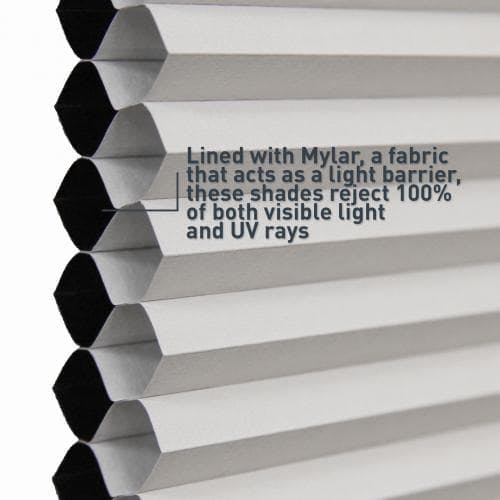
Do Double Cell Shades Block More Light Than Single Cell Shades?
Double cell and single cell shades are similar in their effectiveness in blocking incoming light. However, the material you choose will determine how much light your cellular shades let in. Choose light-filtering cellular shades if you want diffused natural light to enter the room. Or you may prefer to block out the light completely. In that case, go for blackout shades.

Pictured: Premium Blackout Cellular Shade in Igloo.

Pictured: Premium Light Filtering Cellular Shade in Sugary Sand.
Can Cellular Shades Reduce Outside Noise?
Due to their honeycomb construction, both double cell and single cell shades provide excellent noise-reducing qualities. The cells trap noise similar to how they trap air coming in from the outside. Double cell shades have two layers of cells, so they'll block out twice the amount of sound. If you live in a particularly busy and noisy area, we recommend double cellular shades.

Pictured: Premium Blackout Cellular Shade with Motorized Lift.
Are Cellular Shades Easy to Clean?
If you're like most people, you dread washing your windows. And who wants to clean blinds and shades on top of that? The good news is that cellular shades are very easy to clean and maintain. They're typically made of durable, anti-static fabrics, so light dusting or vacuuming from time to time is usually all you need.

How Much Do Cellular Shades Cost?
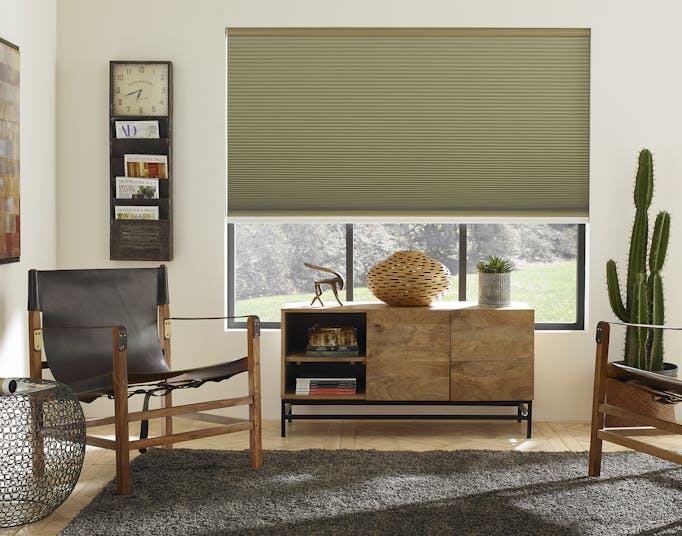
Pictured: Premium Blackout Cellular Shade in Mint Condition.
Your cost will vary depending on the type of fabric you choose and if you opt for a motorized option. Double cell shades will cost more than single cell shades due to their extra layer of material. But double cell shades are worth it if your home requires more insulation and you live in a loud neighborhood. Cellular shades may not be the most affordable option available, but the long-term savings you'll see on your energy bills make them well worth the initial investment.
Build Your Perfect Shade!
Let us help you find the perfect cellular shade for your lifestyle. Give us a call at 800-505-19050 and speak with one of our expert Design Consultants. You can also check out our guide on how to measure for cellular shades.
Want More Design Inspiration?
How Shades Made From Water Bottles Can Help Lower Energy Bills
8 Ways to Hack Your Bedroom for Better Sleep
The 5 Best Window Treatments for the Ultimate Game Day Experience
